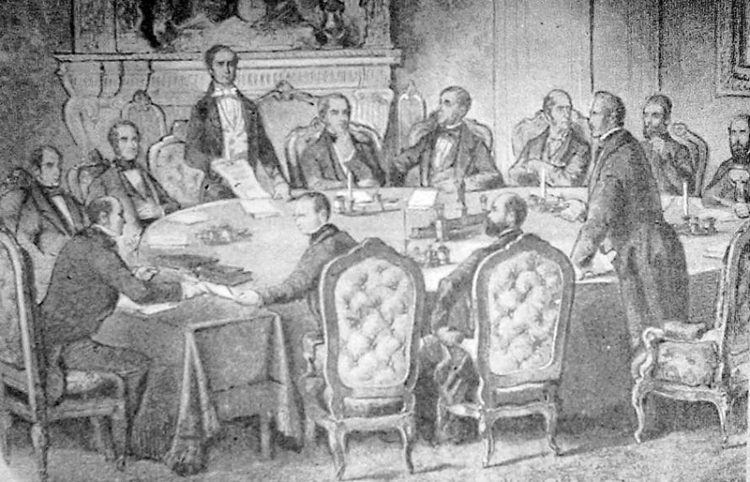It’s pretty easy to disseminate information today. We have phones to call or text, maybe through social media. In the olden times, of course, it was much different.
Passing down information from Point A to Point B could already take some time (thus, the idea of using even pigeons as messengers). Now, imagine there was an ongoing war, and the leaders decided to raise the white flag and cease the battles. Those on the outskirts, probably fighting guerilla-style, were less likely to receive the news soon.
This is what happened to these three battles that extended even after the war had officially concluded.
Battle of Prague
The Battle of Prague was the last major clash of the Thirty Years’ War. The war resulted from entangled conflicts that resulted from prominent religious and political differences. As peace talks began, delegates from various nations met in Munster and Osnabruck to negotiate. These peace talks dragged on for months.
Meanwhile, on the battlefields, the Swedish forces mounted one last campaign to Prague, with General Hans Christoff von Konigsmarck’s group entering the city that was at that time defended by the former general Governor Feldmarshall Rodolfo Colloredo Mels und Wallsee. The Swedes attempted to join the Old Town, located on the river’s eastern bank, but the Colloredo’s men could hold them off on the Charles Bridge. After that, the Swedish armies launched several attacks against the city, but the strong fortification resisted.

Back to the diplomatic talks, which resulted in a series of treaties called the Peace of Westphalia. The Treaty changed the boundaries of Europe and solidified the acknowledgment of religious freedoms as the rulers of the Imperial States could now choose their official religions. Both Catholics and Protestants were made equal in the eyes of civil law. At the same time, Calvinism was also recognized as an official religion.
The Treaty was signed on October 24, 1648, officially ending the hostilities. However, the news did not reach Prague until after eight days, on November 1, and only then were the troops ordered to leave. Their ceasefire officially ended the Thirty Years’ War.
Pontiac’s Rebellion

Known as the continuation of the Seven Years’ War from 1754 to 1763, Pontiac’s Rebellion was quite a different case. It was not the lack of communication that caused the skirmishes even after the war ended. It all started when the British forces greatly outnumbered the French colonists. To solve this, the French recruited Native American groups who were against the British colonists. After the war ended on February 10, 1763, with the signing of the Treaty of Paris, France gave up its former territory under Britain’s control. The Native American Indians feared that the loss of their French allies would result in the incursion of colonial settlers. Therefore, Ottawa leader Chief Pontiac encouraged Ohio Country tribes to rise up against the British. The Ojibwas, Potawatomis, Huron, Miami, Weas, Kickapoo, Mascouten, Piankashaw, Delaware, Shawnee, Wyandot, Seneca, and Seneca-Cayuga tribes all participated and joined the Ottawa tribe.
By the late fall of 1763, Pontiac’s Rebellion had already captured or killed more than 600 people. They also seized Britain’s garrisoned fort in the Ohio Country, Fort Sandusky. Because of their continued hostilities, the British military took the offensive against Pontiac’s rebel forces. Both Colonel John Bradstreet and Colonel Henry Bouquet launched their own invasions. The Wyandot and Ottawa tribes surrendered, but Pontiac’s troops did not. It was not until they ran out of ammunition that they finally surrendered in September. Bouquet forced the other remaining tribes to surrender a month after.
The hostilities lasted for 16 months and ended in the autumn of 1764, more than a year after the Treaty of Paris was signed.
https://www.youtube.com/watch?v=2XpvAM8xxdY
CSS Shenandoah
Confederate General Robert Lee surrendered his army on April 9, 1865, at Appomattox, ending the American Civil War. However, somewhere among the Aleutian Islands, the Confederate ship CSS Shenandoah was still there, sinking some 38 Union merchant vessels for the next six months. The problem was that reliable news was hard to come by on the sea, so the captain and crew of the ship were unsure if the Confederacy had indeed already surrendered. Nevertheless, they continued their task of chasing down enemy ships across the Pacific Ocean.

It was not until August 2, 1865, that CSS Shenandoah encountered a British barque (sailing ship) and was told that the war was over for quite some time. Upon learning the news, they sailed south around Cape Horn and north to Liverpool, where it surrendered on November 7, 1865, seven months after the surrender. The officers and crew of the ship did not return to the United States for the next few years, afraid that they would be prosecuted for piracy.
Check out the full story in the documentary below.
Read more:
Have you heard about the Vietnamese soldier who fled to the jungle with his son and lived there for the next 40 years, even after the war? How about the Japanese soldier, who continued his battle in the jungle for 30 years after their country surrendered? Check out other historical pieces here!










COMMENTS
You must become a subscriber or login to view or post comments on this article.